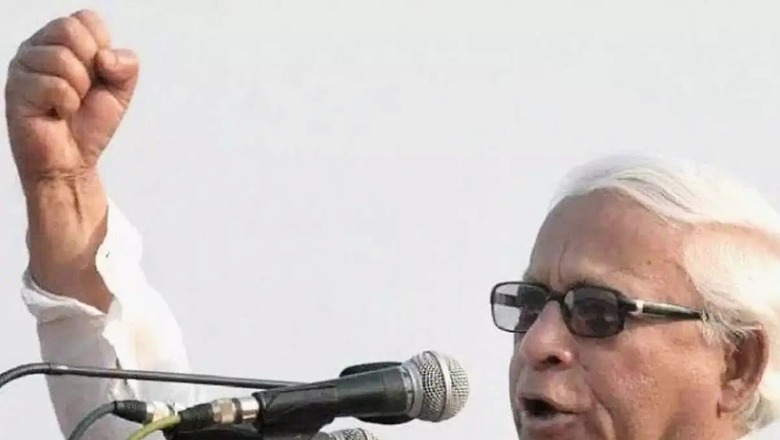
views
Former West Bengal chief minister Buddhadeb Bhattacharjee died around 8.20 am on Thursday in his two-room south Kolkata residence. He was 80 and unwell. Doctors said he passed away following a heart attack.
“Buddha Babu”, as he was popularly known, was famous for his simple living.
He began his career in student politics and closely worked with communist icon Jyoti Basu.
Bhattacharjee became chief minister of West Bengal in 2000 and remained in the post till 2011 when Mamata Banerjee ended 34 years of Left rule in the state.
CM with ‘revolutionary’ ideas
Bhattacharjee is seen as a “tragic hero”, according to analysts, because he tried to go against traditional Leftist thinking and usher industrialisation into West Bengal, but was defeated in the end. He wanted to focus on the information technology (IT) sector. He tried to argue that the 30-year-old Left Front government needed to change focus. His idea was to hold on to agriculture and bring in industry. He wanted to change the image of Bengal, known for strikes and hartal.
In 2006, when the Left won power with 235 seats in the assembly, Buddhadeb Bhattacharjee came up with the slogan “Krishi amader bhithyi, shilpo amader bhobishyat (agriculture is our foundation, industry is our future)”.
Land movements and losing ground
Tata Motors showed interest in starting a factory for its Nano car in Bengal. Buddhadeb Bhattacharjee decided to provide land for this in rural Singur block.
The Left’s political base was focused on the farm community and land rights. Mamata Banerjee picked up the Singur issue and started a spirited movement, with the narrative that Bhattacharjee’s Left Front government was snatching land from poor farmers. She sat on a nearly month-long hunger strike. At least 14 people were killed in police firing during protests. The chief minister also faced criticism from his party CPI(M). The Tatas finally left Bengal.
The Singur campaign was followed by the Nandigram movement with a similar narrative that the state government was planning to seize land from locals and start a chemical plant there. Mamata too plunged into this stir. In the 2008 panchayat polls and the 2009 Lok Sabha elections, the Left was dented in Bengal while the Trinamool Congress gained ground.
Ahead of the 2011 assembly polls in the state, Mamata gave the slogan of “Poriborton (change)”. It worked with the electorate as the TMC came to power, unseating the Left Front after decades. Buddhadeb Bhattacharjee himself and several of his ministers faced defeat.
‘Left in the lurch’
Party insiders say Bhattacharjee’s intention was to generate employment and development in Bengal but he did not get proper support from his party.
“Ma, Mati, Manush (Mother, Land, and People) actually describes the Left ideology, but the TMC used it to spin the narrative that the Left was anti-farmer,” said a close associate of the late CM.
Bhattacharjee was frequently compared with his mentor and former chief minister Jyoti Basu. “Their styles of running the government were not the same, but Bhattacharjee wanted to rule with honesty and good intentions,” said the associate.
Sources said that Bhattacharjee developed health problems following the electoral defeat in 2011 and they plagued him till the end. The ailing former CM last attended a party meeting at Kolkata’s Brigade Ground in 2019.

















Comments
0 comment